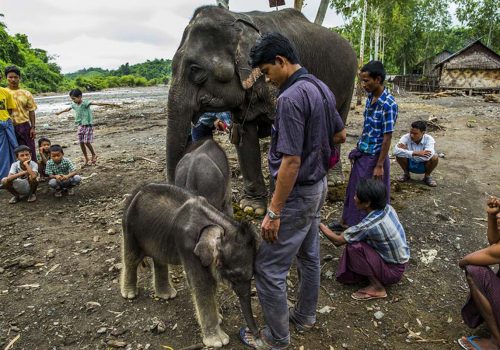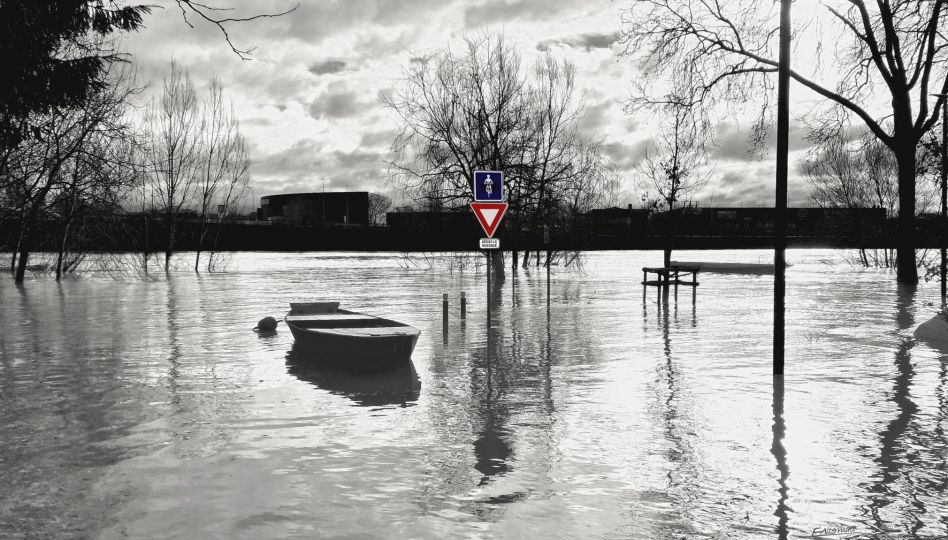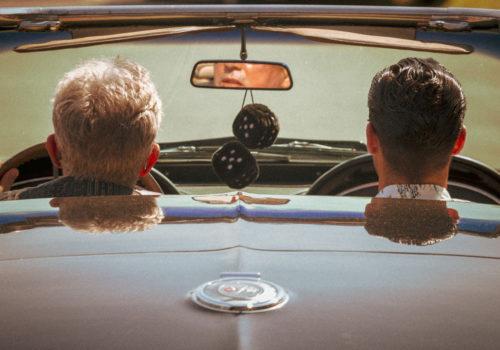One of the unintended consequences of the Coronavirus pandemic is the plight of elephants working in the tourism industry in Thailand. The New York Times, in an article of March 24, 2020, alerts us to the sad plight of a little more than a thousand elephants who find themselves unemployed, for lack of hired ride by tourists who have stopped coming, they face the risk of returning to the illegal logging in the forests or begging in the streets of Bangkok, because the cost of feeding an elephant can reach 40 dollars per day, the equivalent of 3 times the minimum daily wage of Thai people.
What is often overlooked is that most of the elephants employed in tourist industry in Thailand come originally from Myanmar. Iconoclastic artist Ai Weiwei recently made a 360-degree VR video documentary (Omni) about Myanmar’s furloughed elephants wandering aimlessly in the jungle since the government prohibited them from working, these scenes are then relayed to images of Rohingya refugee camps in Bangladesh, a particularly poignant testimony of two populations who lost their job and are chased away from their home, a documentary without music or any voice over commentary, stigmatizing a phenomenon that has become common in our chaotic world today.
Ai Weiwei stated in The Guardian in January 2020: “I relate to the elephants. There are lot of small ones who have lost their parents. Elephants are like humans. Without parents they cannot survive. They have to stay with them until they are seven years old.”
Here are two stories of baby elephants told by the Burmese photographer Ko Myo who specialized in the fate of elephants, because Myanmar, and in particular the Karen region, remains the main source of elephants provided for Thai tourism and unfortunately also the poachers of the clandestine market of ivory and elephant skin (for traditional Chinese pharmacy) in Asia. Ko Myo, a regular at the Yangon Photography Festival, has been awarded several times for his documentaries full of empathy and humanism on Burmese elephants. During the 2019 edition of the Yangon Festival of Photography (YFP) the appearance of two elephants caught the imagination of spectators in the Maha Bandoola Park in central Yangon: young and old taking selfies in front of the large prints of the “Last Elephant” by Ko Myo, for whom Myanmar elephants are facing the threat of complete extinction in 20 to 30 years at the current rate of poaching and export to Thailand. Others were photographing themselves in front of Francis Latreille’s baby mammoth, a 40,000-year-old mammoth recovered in Siberia due to global warming. Latreille’s frozen mammoth and the snowy landscapes of Siberia brought the park’s public a welcome freshness under an ambient temperature of more than 30 degrees at dusk in the former capital of Myanmar.
According to Ko Myo, there are less than 50,000 wild Asian elephants in the world today. Myanmar is home to one of the largest populations, although this number has dwindled from 10,000 to one or two thousand head in the past two decades. Myanmar elephants could be extinct by 2030/2035 due to poaching, loss of habitat and land disputes between humans and elephants. Myanmar therefore faces a major challenge to save its elephants: its rate of deforestation is one of the highest in the world and it is the second most vulnerable country to climate change.
So, Ko Myo tells us the story of baby elephant Mi Chaw. One day, bamboo cutters working in the jungle heard a wild elephant screaming near their workplace. Fearing a possible encounter, they made noises to chase him away. They realized too late that they had scared away a mother elephant who had just given birth, leaving her newborn behind. Villagers called the veterinarian Dr. Myo Min Aung, a member of EERU (Elephant Emergency Response Unit). He baptized the female baby Mi Chaw (“Pretty girl”) and cared for her as if she were his own child. Orphan, and deprived of maternal milk, Mi Chaw suffered from acute diarrhea after taking powdered milk, the vet tried in vain with the breast milk of lactating women in the village. The baby elephant was too sick and weak, she slept in the doctor’s house and the village children came to see and pet her every day. After about 20 days in the company of humans, Mi Chaw did not survive the separation from her natural mother. The veterinarian and the mahouts then organized a religious burial led by a Buddhist monk who recited prayers of good deed to accompany Mi Chaw to heaven.
Ko Myo also tells the story of Ayarthu, an eight-month-old female calf elephant. Following the death of her mother at the hands of poachers, Ayarthu got lost and ventured near human habitats. Local villagers called the forestry office to come and capture her and send her to Wingabaw elephant camp. In Ko Myo’s reportage, we can see the mahouts with the help of domesticated elephants, the forest guards and the police trying to capture the Ayarthu baby elephant (at Nga Pu Taw, Irrawaddy, in August 2017). They tried to keep her on the ground after capture. Ayarthu was then tied to wooden poles and struggled all night before being sent to Wingabaw camp. The mother of the baby elephant was killed for her skin by poachers in the Nga Pu Taw Forest Reserve.
Among Ko Myo’s portraits there are the majestic portrait of a domesticated elephant who was working in an elephant camp, and that of a wild elephant, leader of his herd, posing like a statue in the jungle. The most dramatic ones are the portraits of wild elephants killed by poachers, like this carcass of an elephant on his knees almost entirely skinned. At the same time Ko Myo shows us the arrest of two poachers with the tools of their crimes, posing in front of pieces of dried elephant skin, ready to be sold on the underground market for the Chinese traditional pharmacopoeia considered them possessing whatever mysterious therapeutic virtue.
According to Ko Myo, at least 115 wild elephants have been killed by poachers in the past five years in the dense jungle of Irrawaddy, the Pegu range (Bago Yoma) and in the outskirts of the Yangon region, with a record 59 victims in 2017. This sudden spike led to increased support from the Myanmar government for the protection of elephants, as well as international organizations such as WWF and local Civil Society Organizations. Campaigns such as Voice for Momos to ban the sale of wild animals (http://www.wwf.org.mm/en/yangon_wwf_today_list_page/) have been organized and training has been provided to forestry staff, for mahouts and rangers from the Myanmar Emergency Elephant Response Unit. The increase anti-poaching patrols led to 15 arrests of poachers in 2017.
Ko Myo has also documented the destruction of ivory confiscated by the authorities in the fight against trafficking. The destruction ceremony of confiscated elephant ivory and parts of wild animals was organized for the first time by the Myanmar Ministry of Natural Resources and Environmental Conservation in Naypyidaw on October 4, 2018. According to Ko Myo, in total, 277 pieces of elephant tusk worth US$1.3 million, 227 pieces of elephant and other wildlife bones, 45 slices of skin, 1544 pieces of horn, 45.5kg of pangolin skin, and 128 other wildlife parts confiscated throughout the years were burned at the ceremony.
Fortunately, we have also a playful portrait of a rare young white elephant, considered sacred, the 7-year-old white elephant was properly bathed and washed before receiving the title of “royal” and entering a special enclosure at the royal palace. White elephant had been the subject of a war between Thailand and Burma in the 16th century.
Let us hope that with these rarely seen images of Ko Myo, we will never forget our beloved pachyderm, a giant in the wild, faithful in family, endowed with great memory, the incarnation of the god Ganesh for the Hindus, symbol of wisdom and intelligence, the patron saint of intellectuals, students and writers. Beyond tourism, the circus, zoos in the city, and beyond the exploitation of animals in forest logging work, beyond the safaris and reservations in Africa (*) which continue to see a large number of elephants disappear, we should reflect and review our relationships between humans and elephants in a perspective of harmonious coexistence in how to balance urban and agricultural development with the urgently needed protection of nature, so as to ensure a real sustainable longevity of the elephant.
Jean Loh
(with the help of Minzayar Oo for the English captions)
(*) In Mozambique, in the Niassa reserve which has a larger surface than Switzerland, the population of elephants would have dropped from 12,000 in 2009 to less than 4,000 in 2016. (Liberation December 30, 2019).
Ko Myo (Burmese, born in 1978) studied basic photography at Myanmar Photographic Society and gained an interest in documentary work after attending a workshop at the Yangon Photo Festival (founded and directed by Christoph Loviny). He has since been taking part regularly in YPF where his photo-essays received awards for multiple years. His major ongoing long-term project focuses on Myanmar’s elephants, particularly the increasing conflicts with humans brought about by deforestation, rapid population decline due to the growing wildlife trade and complex relationships between man and wildlife.
Ko Myo hopes to help in the protection of elephants by using his photography to increase awareness of their plight and educate on how to minimize the human impact on elephants’ lives. He hopes that his work will inspire greater awareness of the important relationship between humans and these endangered animals.
















